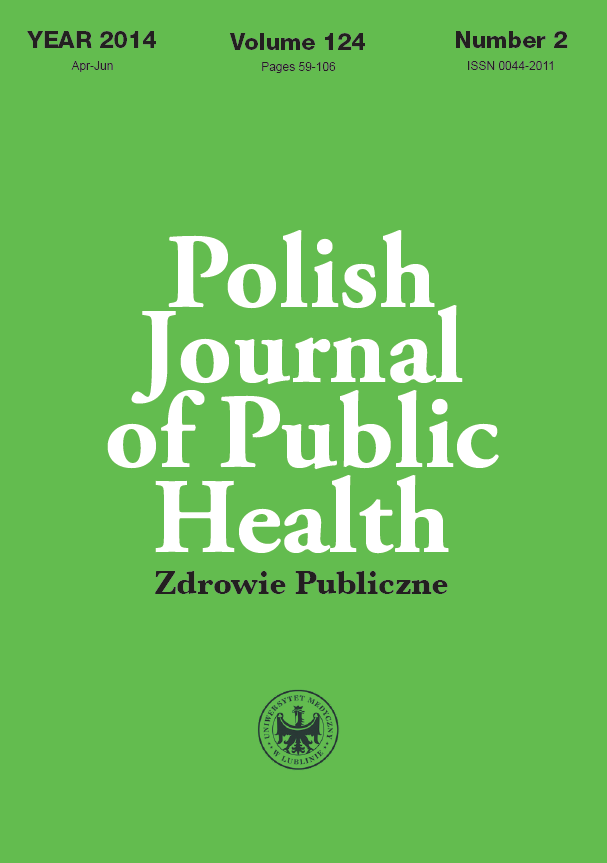Prevalence of joint hypermobility syndrome amongst dental students of the Medical University of Lublin
DOI:
https://doi.org/10.2478/pjph-2014-0016Keywords:
joint instability, joint laxity, dentistryAbstract
Introduction. The joint hypermobility syndrome is a connective tissue disorder affecting the entire organism. The symptoms include laxity of joint-stabilizing capsules and ligaments, excessive joint mobility and other accompanying symptoms. Some symptoms manifest in the oral cavity, which is of importance to dentists.
Aim. The authors attempted to determine the prevalence of joint hypermobility syndrome in the population studied.
Material and methods. The questionnaire study was conducted amongst students of the Faculty of Medicine with Dentistry Division, Medical University of Lublin. The study population consisted of 321 individuals, including 283 Polish students and 37 students of south-eastern nationalities (Saudi Arabia, Taiwan).
Results and conclusions. The prevalence of constitutional hypermobility amongst dental students is comparable to that reported in literature. Constitutional hypermobility is more common in students of south-eastern nationalities than in Polish students.
References
1. Kirk JA, Ansell BM, Bywaters EGL. The hypermobility syndrome: musculoskeletal complaints associated with generalized joint hypermobility, Ann Rheumat Dis. 1967;26:419-25.
2. Ross J, Graham R. Joint hypermobility syndrome. BMJ. 2011;342:c7167.
3. Kopff B, Raczkowski WJ. Zespół hipermobilności stawów – rzadko rozpoznawana patologia w obrębie narządu ruchu. Kwartalnik Ortoped. 2011;2:80. ISSN 1230-1043.
4. De Coster PJ, Van den Berghe LI, Martens LC. Generalized joint hypermobility and temporomandibular disorders: inherited connective tissue disease as a model with maximum expression. J Orofac Pain. 2005;19:47-57.
5. Kavuncu V, Sahin S, Kamanli A, Karan A, Aksoy C. The role of systemic hypermobility and condylar hypermobility in temporomandibular joint dysfunction syndrome. Rheumatol Int. 2006;26:257-60.
6. Ziad S. Al-Rawi, Adnan J, et al. Joint mobility among university students in Iraq. Rheumatol. 1985;24(4):326-31. doi:10.1093/rheumatology/24.4.326.
7. Scher DL, Owens BD, Sturdivant RX, Wolf JM, Incidence of joint hypermobility syndrome in a military population: impact of gender and race. Clin Ortho Related Res. 2010;468(7):1790-5.
8. Czaprowski D. Generalised Joint Hypermobility in Caucasian girls with Idiopathic Scoliosis: Relation with age, curve size, and curve pattern. Sci World J. 2014;2014:370134. doi:10.1155/2014/370134.
9. Kwon JW, Lee WJ, Park SB, et al. Generalized joint hypermobility in healthy female Koreans: prevalence and age-related differences. Ann Rehabil Med. 2013;37(6):832-8. doi: 10.5535/arm.2013.37.6.832. Epub 2013 Dec 23.
10. Beighton P, Grahame R, Bird H. Hypermobility of Joints. London: Springer;1999.
11. Klemp P, Williams SM, Stansfield SA. Articular mobility in Maori and European New Zealanders. Rheumatol. (Oxford). 2002;41:554-7. doi: 10.1093/rheumatology/41.5.554.


